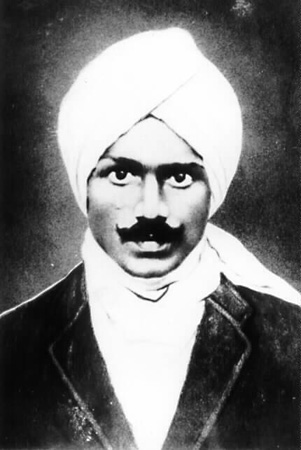Tricks
and tips for developing good habits- A guide on how to form new Habit /Habit loop
Habit
The dictionary definition of habit is something
that you do often and regularly, sometimes without knowing that you are doing
it.
The synonym of habit are practice, custom, pattern, routine, style,
convention, policy, way, manner and tradition.
The foundation of
extraordinary habits and their outcome is the aggregation of minacule and small
daily routines done over a period. Frequent repetition automates behaviors and turn
them into habits. The sense of reward and incentive such as enjoyment, builds
the behavioral pattern that can be either good or bad. The habitual mind
controls about 95% of human behavior. People do the same things daily 45% of
the time, often while thinking of something else. The habitual mind learns
through repetition and reward, and works automatically.
How to develop good
habits in 4 simple steps?
Habits follow a four-step process: “Trigger, Action, Reward
and Repetition.” Trigger are the stimulators to take action; Reward are the
motivators to repeat again.
Figure represents Habit loop or habit formation model
Step 1- Trigger or Cue in
forming habits
The human brain is a
three-pound mass of about 100 million neurons, “each making an average 10,000
connections with other neurons.” This makes the brain one of the most complex
creations in the universe.
Pavlov developed an experiment
to study the digestive processes of dog. He surgically redirected the animal's
digestive fluids outside the body and measured. Pavlov noticed that dogs began
to salivate in the presence of the technician who normally fed them, rather
than simply salivating in the presence of food. Pavlov called the dogs'
anticipatory salivation was termed as "psychic secretion". According
to these observations, Pavlov conducted another experiment with a stimulus (e.g.
the sound of a metronome) and then gave the dog food. After a few repetitions,
the dogs started to salivate in response to the stimulus. Pavlov concluded that if a
particular stimulus in the dog's surroundings was present at the time when the
dog was given food then, that stimulus could become associated with food and
cause salivation on its own.
Your environment provides
a vital role in shaping your habits. Each of your habit is triggered by a condition acting as stimulus like
in dog’s experiment. To eliminate a bad habit, remove the cues that trigger it.
Include the positive
habit-forming cues in your environment to influence your patterns.
Here, the cue could be as
simple as seeing the sports shoe reminding you of hitting the gym associating the
cue with the desire action.
Step 2 – Respond to the
trigger by taking action - Start with small and make the activity attractive
The trigger or cue
initiates the compulsion or craving. This craving or stimulus is a response by
the brain to the cue to perform the action. Like in the dog’s experiment, the
ringing of bell causes the saliva to produce in anticipation of food. Take
advantage of this programme in the brain to form good habit and forget bad
habit by eliminating the cue.
By taking action on what
we intent the habit only after it is established. To establish a new habit,
start small by engaging in the relevant activity. It is important at least to
show up. This “showing up” helps to “ritualize the beginning of a process.”
Once started it is easier to focus and perform a routine. To break a bad habit,
make it more difficult to perform; increase the difficulty to carrying it out. E.g.,
paying and enrolling for Toastmasters in advance means making a commitment to
attend it.
Keep the intended habit simple and easy to perform.
The minor changes in behavior with a continuous practice over a time will
become massive habits. Boredom is a risky pitfall in the process of forming
good habit and therefore we should try to make the activities interesting or
delightful to perform. Once
the trigger or cue is obvious take the action immediately and do not delay.
Count 5 to 1 second backward and within that get up to take action.
Step 3 – Reward your activity
Bad habits will not form
if they turn out to be unsatisfying or painful. Rewards and incentives play a
very important role in forming habits. Activities, which are enjoyable and
rewarded are likely to be forming as a habit if repeated. We must nurture the
effort of instilling good habits. Your individual identity aligns with your
habitual behavior.
When we experience
pleasure, the brain’s reward system releases dopamine and we are likely to
repeat a rewarding experience. Like in the dog’s experiment when we simply plan
to repeat a specific behavior that gives pleasure, the release of dopamine
occurs. It happens when we merely expect the reward. Thus, the expectation
becomes rewarding in itself. That is why it is easier to form a habit if an
opportunity is attractive. Then, “habits turn into a dopamine-driven feedback
loop.” To increase the attractiveness of a habit, coupled with an activity “you
want to do” with an activity “you need to do” – this is called “temptation bundling.”
Reward yourself for doing the planned activity with
something desirable to you. I like to reward myself with my favorite
chicken Shwarma or any useful electronic device. My wife bet for Rs 500 as a
reward for finish reading one book. Find what works for you.
Step 4 – Repeat the many small
activities into bigger routines. Drops makes the ocean
The many small routines
accumulates to represent an individual’s identity. The routines becomes habits precisely
because the person repeats them. The decision by the person to enact the same
behavior repeatedly, the behavior over a time becomes a habit. The time taken
to form habit varies from person to person and the motivation behind it. Habits
decreases the level of stress and “cognitive load” because their automated
performance derives from memories of your reactions to past situations. Good habits
saves energy as much as possible and enhances the quality of life with a bigger
and healthier reward.
The key here is to trigger the activity by a cue, respond
to the cue by taking action, be rewarded for taking action and then repeat the
activity, get the reward and then repeat the activity again. Once you have
repeated the same activity sufficiently it becomes habit and a routine.










0 Comments